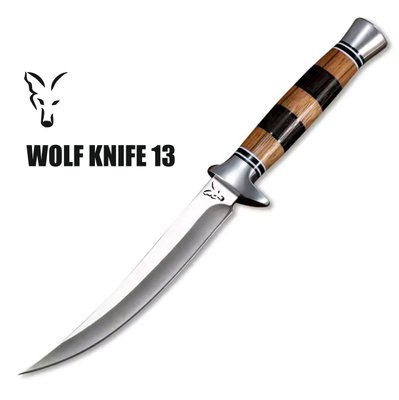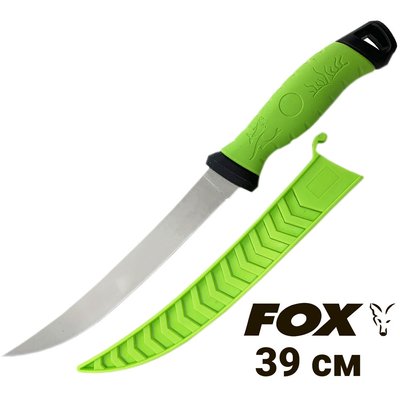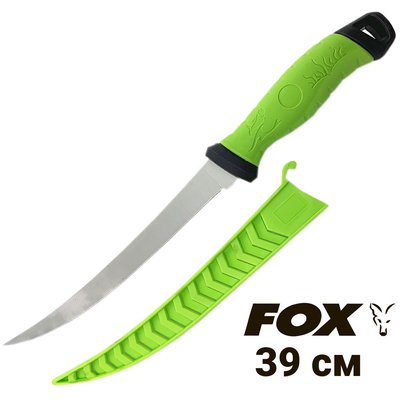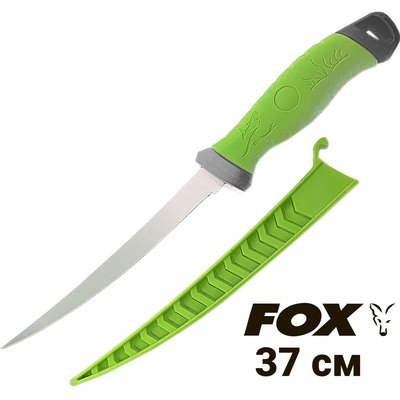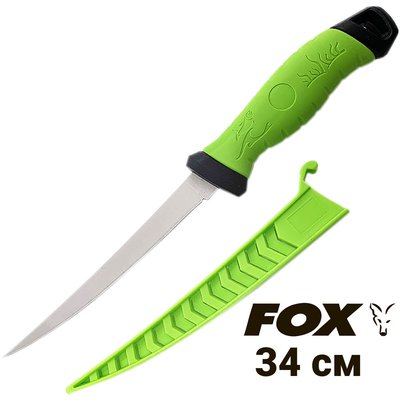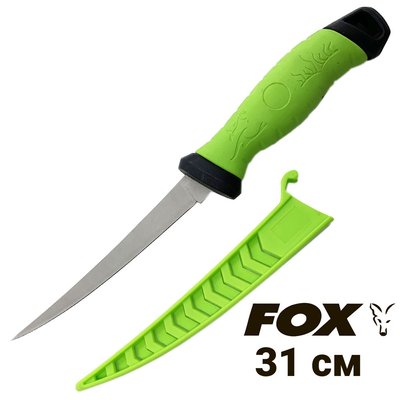|
Quantity
|
Price
|
||
|
|
|||
Knives are one of the most ancient and universal human tools, which are used for various purposes: from household to military. Knives can be classified according to different criteria: by purpose, by design, by blade shape, by handle material, etc.
According to their purpose, knives can be divided into:
• Hunting knives - knives designed for hunting animals or fishing. These knives include finks, folding knives, fishing knives, spearfishing knives, etc.
• Hiking knives - knives designed for survival in extreme conditions or for performing various tasks on a hike. These knives include multitools, survival knives, throwing knives, etc.
• Combat knives - knives designed for self-defense or combat. Such knives include bayonet knives, army knives, tactical knives, self-defense knives, etc.
• Specialty knives - knives designed to perform certain specialized functions. Such knives include sommelier knives, carving knives, souvenir and collectible knives, etc.
By design, knives can be divided into:
• Automatic knives - knives in which the blade extends automatically when you press a button or lever. These knives include switchblades and butterflies.
• Folding knives - knives in which the blade folds inside the handle using an axial pin or lock. These knives include penknives and folding hunting and camping knives.
• Butt knives - knives in which the handle is perpendicular to the blade. These knives include brass knuckles and pushdags.
• Forged knives - knives in which the blade is made from a piece of steel by forging at high temperatures. These knives include Damascus and Japanese katanas.
Based on the shape of the blade, the following types can be distinguished:
• Straight blade - a blade with a straight or slightly curved blade. This blade is well suited for piercing and slashing, as well as for defense against the enemy. A straight blade usually has one or two blades and can be symmetrical or asymmetrical. Examples of straight blades: sword, dagger, checker.
• Curved blade - a blade with a strongly curved blade part. This blade is better suited for slashing and slashing, as well as for maneuvering in battle. A curved blade usually has a single blade and can be symmetrical or asymmetrical. Examples of curved blades: saber, katana, curved dagger.
• Sickle-shaped blade - a blade with a curved blade part in the form of a sickle or hook. This blade is suitable for cutting and catching blows, as well as for disarming the enemy. A crescent blade usually has a single blade and can be symmetrical or asymmetrical. Examples of sickle-shaped blades: kukri, falchion, kama.
• Blade-shaped blade - a blade with an expanded blade part in the form of a wedge or an ax. This blade is suitable for chopping and crushing blows, as well as for piercing armor. A bladed blade usually has a single blade and can be symmetrical or asymmetrical. Examples of wedge-shaped blades: axe, reed, glaive.
Based on the blade material, knives can be divided into several types:
• Carbon steel is an alloy of iron and carbon that is highly hard and sharp. Carbon steel knives hold an edge well and are easy to sharpen. However, such knives are susceptible to corrosion and require special care. After use, they should be wiped with a dry cloth and lubricated with vegetable oil. Carbon steel can also turn foods black.
• Stainless steel is an alloy of iron, chromium, nickel and other elements that is highly resistant to corrosion and acids. Stainless steel knives do not require special care and do not stain food. However, such knives are less hard and sharp than carbon steel knives. They need to be sharpened and adjusted more often.
• Damascus steel is a complex alloy of several types of steel, which is obtained by layer twisting and forging. Damascus steel knives have a beautiful pattern on the blade and combine the advantages of carbon and stainless steel. They are quite hard and sharp, and are also resistant to corrosion. However, such knives are quite expensive and rare.
• Ceramics is a material made by sintering metal oxide powder at high temperatures. Ceramic knives are white or black in color and are very light. They are not subject to corrosion, do not absorb odors and do not stain products. They are also very sharp and hold an edge for a long time. However, these knives are very fragile and are not suitable for cutting hard foods such as bones or frozen foods. They also cannot be sharpened or straightened using normal methods.
Based on the material of the handle, knives can be divided into several types:
• Wooden handles have a warm, pleasant-to-touch material that fits well in the hand and does not slip. Wood also has a wide variety of types and shades, which allows you to create beautiful and unique knives. However, wood is susceptible to moisture, temperature and fungi, and therefore requires regular treatment with special oils or varnishes.
• Horn and bone handles also have their own charm and uniqueness, since each piece of horn or bone is unique in its structure and pattern. These materials are quite strong and durable, but also require protection from moisture and fungi. They may also be hard and cold to the touch.
• Plastic handles are a modern and practical option for knives. Plastic is light, cheap, and is not afraid of moisture and temperature changes. It can also imitate various materials, such as wood or stone. However, plastic can be fragile, scratch and fade in the sun. It is also not always pleasant to the touch and can slip in the hand.
• Metal handles are another modern option for knives. The metal is very durable, wear-resistant and does not corrode. It can also be processed in different ways such as polishing, engraving or coating. However, the metal is heavy, cold and slippery to the touch. It can also conduct current or become hot when in contact with fire.
A fishing knife is an important tool for any fisherman. It not only helps you cut fish, but also performs other tasks such as cutting rope, opening canned food, or peeling vegetables.
Fishing knives come in different types and sizes, depending on the preferences and needs of the fisherman. Some of the most common types of fishing knives are:
• Fillet knife. This is a thin and flexible knife with a long blade that is ideal for filleting fish. It allows you to make neat and even cuts without damaging the meat.
• Kukri. It is a curved and heavy knife with a wide blade that is used for cutting bones, cartilage and scales. It can also serve as a self-defense weapon in extreme situations.
• Multitool. This is a utility knife that contains several additional tools such as a screwdriver, tweezers, scissors or a bottle opener. It is useful for solving various problems when fishing or hiking.
• Jackknife. This is a compact and safe knife that is easy to carry in your pocket or bag. It has a blade locking mechanism that prevents the knife from opening or closing accidentally. It can be used for a variety of purposes, including cutting fish.
When choosing a fishing knife, there are several factors to consider, such as the blade material, the shape and size of the handle, the presence or absence of a sheath, and the design of the knife. All these characteristics affect the convenience, efficiency and durability of the knife. A fishing knife is not only a useful assistant, but also a reflection of the style and character of the fisherman.
If you love fishing and want to buy high-quality and reliable fishing knives, then you should visit the Rybalka.ua online store. Here you will find a wide range of knives of different types, sizes and brands. You will be able to choose fishing knives that suit your purposes and preferences. You can also compare prices and features of different models and read reviews from other customers. The Rybalka.ua online store offers you a convenient and safe way to buy fishing knives online. You can place an order in a few clicks and receive delivery throughout Ukraine. Don't miss your chance to buy fishing knives at competitive prices and with a quality guarantee on the Rybalka.ua website.

